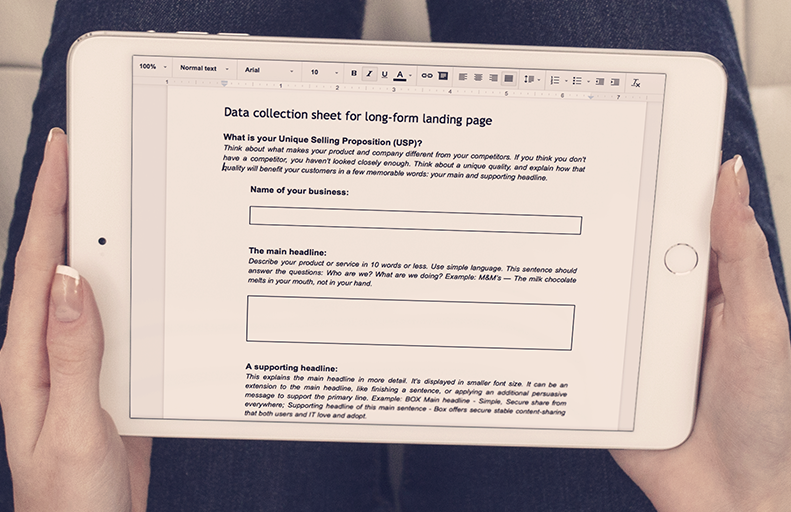Landing Page Construction Kit — Part 1: prepare and define
Breadcrumb
- Home
- PronovixBlog
- Landing Page Construction Kit — Part 1: prepare and define
In the past months we built several landing pages for different products and startups. To make this easier we created a content collection form. While the advice in that form might not be new, it helped us a lot to have it all in a concise, easy to fill out format. The form has reduced the time we need to create landing pages drastically, so we thought it would be useful to share it with the startup community through this blog post series and as a free download.
We are building a mailing list for business people interested in founding IT startups. We’ll send you practical tips and free resources to help you experiment with rapid prototyping of digital businesses.
Get the landing page construction kit!

Some ideas for gathering information about your target audience:
Think about what makes your product and company different from your competitors. If you can’t think of any competitors, keep looking. Think about a unique quality, and explain how that quality will benefit your customers.
Some examples of great USPs:
Think about a good visual to convince your potential customers. What would be the best way to convey your message? Think about images, diagrams, infographics, screencasts, videos.
Sketch, experiment and test it with your target group!
Describe the problems you are solving with 3 benefits, and add a brief description to each. Keep it short!
When discussing landing pages for our products, we often got carried away and started talking about features instead of benefits. Make sure you don’t confuse them! Benefits are the problems you are solving, features are how you are solving them.
An example from our Drupal documentation service:

So, you’ve clearly defined who you are talking to and what you would like to convey. Stay tuned for part 2 of our series where we help you get your message across!

Diána is a Senior Technical Writer at Pronovix. She is specialized in API documentation, topic-based authoring, and contextual help solutions. She writes, edits and reviews software documentation, website copy, user documents, and publications. She also enjoys working as a Program Monitor for NHK World TV and Arirang TV. She graduated as a programmer, then went on earning system administrator and system analyst and designer degrees. She's fluent in English and German, and worked as a translator for a publishing company translating books from German to Hungarian. She's the Hungarian translator of Basecamp. Before becoming a writer, she worked with international clients like Sony Pictures Television, Da Vinci Learning and The Walt Disney Company as a key account manager in integrated marketing campaigns focusing on digital media.
Articles on devportals, DX and API docs, event recaps, webinars, and more. Sign up to be up to date with the latest trends and best practices.

